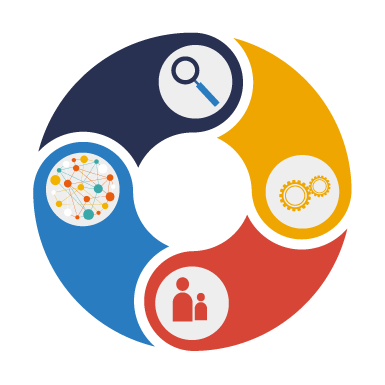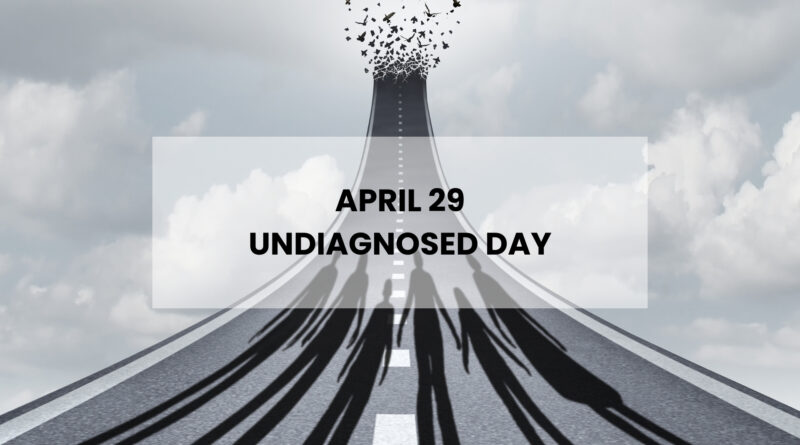April 29, Undiagnosed Day
Written by: Dr. Ravza Nur Yıldırım, MD
April 29, “Undiagnosed Day”, is a day dedicated to individuals whose diseases have not been diagnosed, to their families, and to those who lost their lives due to an undiagnosed disease. This special day aims to raise awareness by drawing attention to diseases that have not yet been diagnosed, and to improve the diagnostic journey by encouraging national or international cooperation.
Undiagnosed diseases are disorders that cannot be explained by standard medical evaluations. In this group of diseases, there may be new clinical conditions whose cause is known but differ from those described in the literature, as well as very rare diseases or diseases whose cause is not known “yet”. It is estimated that 350 million patients remain undiagnosed worldwide and approximately 75% of them are in childhood1,2. Today, thanks to advanced diagnostic methods and advanced genetic examinations, 35-50% of patients who have remained undiagnosed for a long time can be diagnosed3,4. Approximately 600 new diseases have been identified through international undiagnosed disease networks (“Undiagnosed Diseases Network”) established for this purpose, and this number is gradually increasing5–7.
Undiagnosed patients and their families, who consult numerous doctors and hospitals for years, in hope of finding an answer, face various emotional, physical and economic difficulties in this process. Physicians examining the patient have generally never encountered a very rare disease in their professional lives. This causes the patient to be sent from one doctor to another. In addition, access to advanced diagnostic techniques and applications such as genetic examinations are not easily provided. These may cause delays in diagnosis, failure to make the correct diagnosis, and incomplete or inadequate treatment. Due to delayed diagnosis and therefore delayed treatment, the patient’s condition may worsen and even the patient might be lost.
Why is it important to have a diagnosis?
• By elucidating the factors that cause the underlying disease, therapeutic or preventive approaches can be developed for the disease.
• With a diagnosis, doctors can have an idea about how the disease will progress. This way, the physician can make medical arrangements that may be needed in the future for the patient.
• By determining the mode of inheritance of the disease, family screening can be performed and family planning can be carried out for future generations.
• Support groups with other patients and patient associations can be established which may organize strategic activities depending on the patients’ needs.
• With a diagnosis, a social policy approach that supports the patient and their family can be developed in the health system with appropriate financial solutions.
In this direction, within the scope of the RareBoost project, we aim to establish cooperation between experts from different disciplines, to increase experience and data sharing, and to illuminate the molecular basis of these diseases that have not yet been diagnosed. In addition, we strive for creating a base for establishing local and global support networks for drug development studies. This way, we aim to help create diagnostic, follow-up and treatment protocols for these diseases that are difficult to diagnose.
References
1. Marwaha, S., Knowles, J. W. & Ashley, E. A. A guide for the diagnosis of rare and undiagnosed disease: beyond the exome. Genome Medicine 2022 14:1 14, 1–22 (2022).
2. Undiagnosed Day 2024. https://www.udninternational.org/schede-202-human_genome_meeting_2024.
3. Shieh, J. T. C. Genomic technologies to improve variation identification in undiagnosed diseases. Pediatr Neonatol 64 Suppl 1, S18–S21 (2023).
4. Smirnov, D., Konstantinovskiy, N. & Prokisch, H. Integrative omics approaches to advance rare disease diagnostics. J Inherit Metab Dis 46, 824–838 (2023).
5. Wilhelm Foundation | The Undiagnosed. https://wilhelmfoundation.org/.
6. UDNF | Until rare is not a barrier. https://udnf.org/.
7. UDNI – Undiagnosed Diseases Network International. https://www.udninternational.org/.

